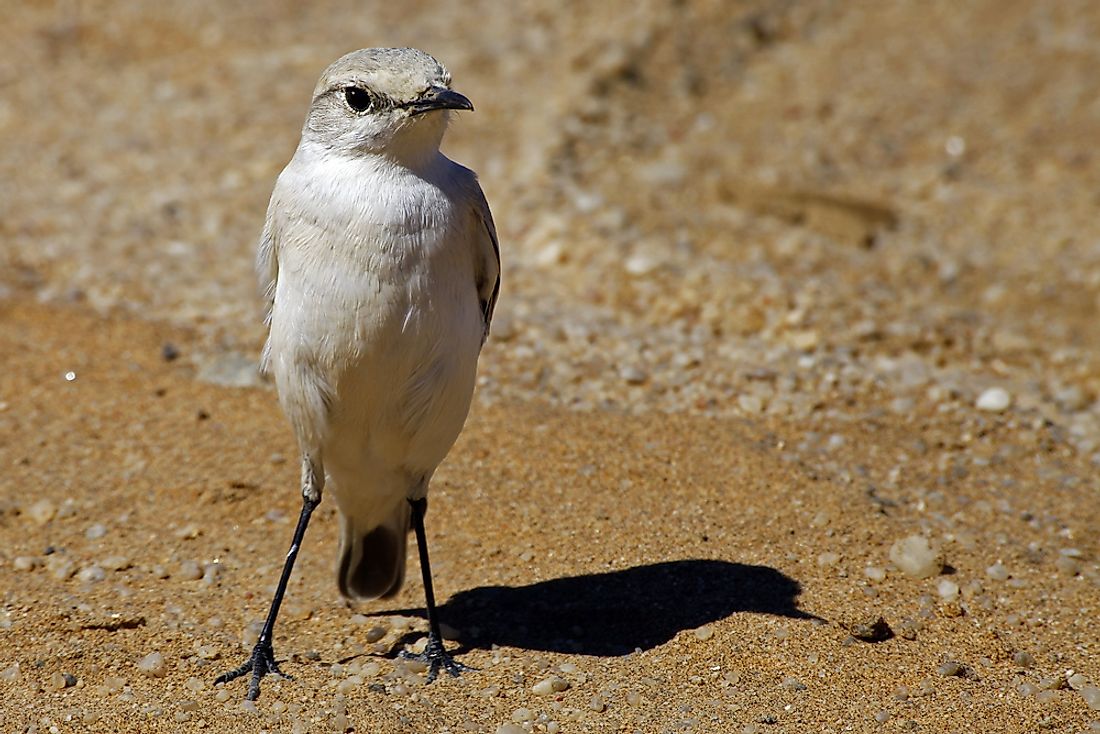Native Birds Of Namibia

Namibia is a mainly dry country with the lowest rainfall in sub-Saharan Africa. However, the country still supports an outstanding diversity of birds within its desert and semi-desert habitats. Namibia supports 645 bird species out of which 14 are endemic. Namibia’s constitutions allow for the conservation of the natural environment, ecosystems, and biological diversity within the country. These national policies are strengthened by international ones that Namibia has adopted.
Native Birds Of Namibia
Dune Lark (Calendulauda erythrochlamys)
The Dune Lark is a bird species endemic to the Namibian subtropical and tropical dry lowland grasslands.The upper parts are sandy-rufous and undersides whitish with streaks. Their plain face has a whitish eyebrow and a dark brown eye stripe. The lark is found in thinly vegetated dunes of the Namib Desert alone, in pairs, and small groups of a few individuals. Invertebrates and seeds make up most of the Dune Lark's diet. Breeding occurs throughout the year after it rains with the females laying one or two eggs which are incubated for about two weeks. Juveniles leave the nest after a nesting period of 14 days after which they learn to fly. The bird has no immediate threats due to its adaptability to desert conditions.
Hartlaub’s Francolin (Calendulauda erythrochlamys)
The francolin is endemic to Namibia and is only found in the north central and northwestern regions of the country. It has been listed as a least concern species. Future threats likely to affect the population of the species are the mining operations of granite from the habitats of the francolin. The francolin is found mainly in semi-arid to arid regions. Their diet primarily consists of insects, worms, and seeds.
Ruppell’s bustard (Eupodotis rueppellii)
The bustard is a sedentary bird native to Namibia occurring in the semi-deserts of Namibia and Angola. It has a gray head and neck,and a sandy brown body with sandy to yellow-brown legs. The Ruppell’s bustard has been listed as a least concern species due to its wide range with a stable population trend. The diet of the bustard consists of insects, termites, seeds, vegetable matter and small reptiles.
Peach-faced lovebird (Agapornis roseicollis)
The peach faced love bird is a small least concern parrot. The parrot forages throughout the day in social groups for seeds and berries and agricultural food such as millet. The bird has a green colored body with a blue ramp, horn-colored bill, gray legs and feet and pink to red face and throat. The bird is threatened by its capture by humans for the pet trade.
Nature of Namibian birds
Most of the birds in Namibia are highly adapted to the arid and semi-arid conditions of the country either through migration during harsh conditions or development of adaptation features. Other birds in Namibia include Montero’s hornbill, Barlow’s and Grey’s larks, Herero chat, bare-cheeked babbler, carp’s tit, white-tailed shrike, rock runner, Benguela long-billed lark, Damara red-billed hornbill and the Ruppell’s parrot.
Native Birds Of Namibia
| Native Birds of Namibia | Scientific Name |
|---|---|
| Dune Lark | Calendulauda erythrochlamys |
| Hartlaub's Francolin | Pternistis hartlaubi |
| Ruppell's Bustard | Eupodotis rueppellii |
| Peach-Faced Lovebird | Agapornis roseicollis |
| Monteiro's Hornbill | Tockus monteiri |
| Barlow's Lark | Calendulauda barlowi |
| Gray's Lark | Ammomanopsis grayi |
| Herero Chat | Namibornis herero |
| Bare-Cheeked Babbler | Turdoides gymnogenys |
| Carp's Tit | Melaniparus carpi |
| White-Tailed Shrike | Lanioturdus torquatus |
| Rockrunner | Achaetops pycnopygius |
| Benguela Long-Billed lark | Certhilauda benguelensis |
| Damara Red-Billed Hornbill | Tockus damarensis |
| Ruppell's Parrot | Poicephalus rueppellii |







